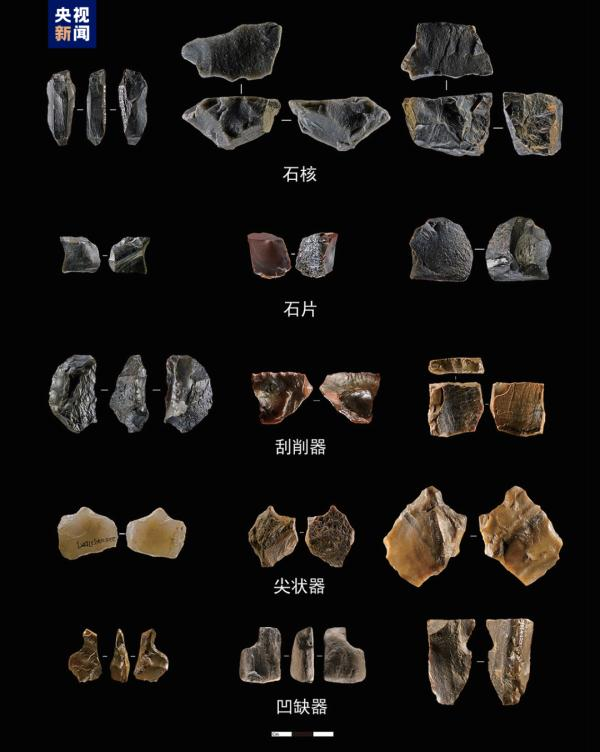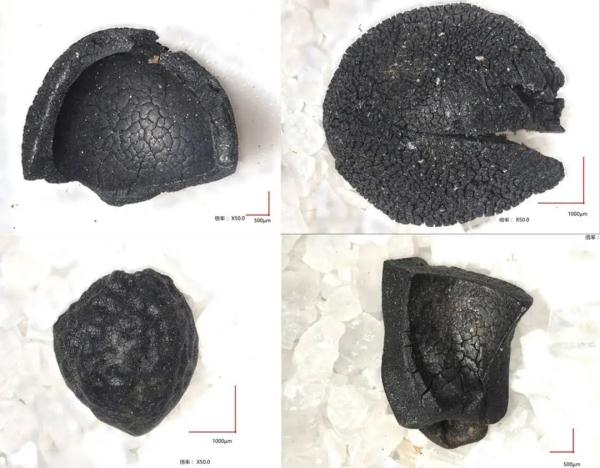
On January 30th,the"Chinese Academy of Social Sciences Archaeology Forum•2023 Chinese Archaeological Discoveries"was held,hosted by the Chinese Academy of Social Sciences and organizated by the Institute of Archaeology of the Chinese Academy of Social Sciences.The activity selected six selected"Six New Archaeological Discoveries in China in 2023"projects,as well as six shortlisted archaeological discoveries.The Mengxihe site in Ziyang,Sichuan province,has become the only site project selected for this selection in Sichuan.

According to Wan Jiao,a professor of library science at the Sichuan Provincial Cultural Relics and Archaeology Research Institute who participated in the study of plant relics at the Mengxihe site,the Mengxihe site is a very important site.The plant relics here are diverse,including plant seeds,plant fruits,as well as four categories of plant buds,branches and leaves that are usually difficult to preserve.At present,more than 30 families have been identified,including Cupressaceae,Fagaceae,Leguminosae,Betulaceae,Rubiaceae,Rosaceae,Cruciferae,Caryophyllaceae,Cucurbitaceae,Polygonaceae,Cyperaceae.Among them,Fagaceae,Cyperaceae,Rosaceae,and Cruciferae have close relationships with humans.
Based on the latest statistical data,the largest number of remains are concentrated in Fagaceae.The second largest number of remains in the Rosaceae is concentrated in Rubus L..The following order of the number of remains is Aquifoliaceae,Sambucus javanica Blume,and Cyperaceae.
More than 40000 years ago,ancestors could enjoy these foods
Scratches and fire marks can explore human behavior
Wan Jiao introduced that the plants of the Fagaceae Fagus L.known to people today are deciduous trees with mature fruits in autumn.They mostly grow in the eastern part of Sichuan and the western part of Hubei,which is in line with the geographical location of the Mengxihe site.These types of plants often form mixed forests with plant species such as Betula Linn.and Quercus L..At the Mengxihe site,plant remains of the Betulaceae and Quercus L.were also discovered,which is similar to the understanding of mixed forests.“Does this imply that the vegetation environment of the Mengxihe at that time still needs further data to be inferred?”

Seed remains unearthed from the Mengxihe site
Among the plants in the family Fagaceae,there are also Quercus plants,commonly known as acorns,whose fruits are edible.This type of plant fruit has also been found in the Mengxihe site.
"The continuous Ge vine,located in the marshes of the river."The"Vitis flexuosa Thunb"recorded in the Book of Songs was also found in the Mengxihe site this time.Moreover,the Book of Songs records that the location for picking Vitis flexuosa Thunb is by the water,which is similar to the environment of the Mengxihe site.The remains of the Rubus L.with various sour and sweet berry fruits have also been discovered at the Mengxihe site.The ancestors of Mengxihe,who lived tens of thousands of years ago,had already tasted sour and sweet fruits.In addition,Cyperaceous plants the fifth largest number of remains living by the water's edge are also edible.

Walnuts unearthed from the Mengxihe Site
Wan Jiao specifically mentioned that many irregular scratches were also found in the shells of the fruits of plants in the family Fagaceae.“From current observations,it seems that it is not naturally formed and should be related to human unconscious activities.”
The nuts that exploded and carbonized due to fire,the loose voids that appeared after being exposed to fire,and the fire marks on the sedge,have also been found in the plant remains of the Mengxihe,with clear signs of fire exposure.This may provide clues for how humans utilize plant resources.

Wooden artifacts unearthed from the Mengxihe site
A saturated environment allows for the preservation of a large amount of plant remains
To fill the gap in research on hunting and gathering economy
Gao Xing,a researcher from the Institute of Vertebrate Paleontology and Paleoanthropology,Chinese Academy of Sciences,mentioned when discussing the Mengxihe site that the burial conditions of the site are unique,so the remains are relatively intact.Zhao Zhijun,a distinguished professor at Shandong University and researcher at the Institute of Archaeology,Chinese Academy of Social Sciences,also mentioned this in an interview.It is precisely because the Mengxihe site is located in a saturated environment that excellent organic materials,especially plant materials such as trees,seeds,and wooden products,are preserved.“Plants are organic matter and are difficult to preserve in archaeological sites for a long time.Plant remains are rarely seen in Paleolithic sites,especially in the mid Paleolithic sites dating back 50000 to 100000 years.”The large amount of plant remains unearthed from the Mengxihe site provides good conditions and opportunities for archaeologists to study the utilization of plants by ancient humans.

sporopollen
In addition,Zhao Zhijun also mentioned that agricultural society developed from the economy of gathering and hunting.However,due to the lack of plant remains,previous academic research on the ancient hunting economy could only discuss the aspect of hunting,and there was relatively little research on the aspect of gathering.“But ancient humans relied more on gathering for food,because the collection of plant-based food was more stable,and the hunting of animal based food had a great deal of chance.”Therefore,the discovery of the Mengxihe site can make up for a significant gap in the research of ancient gathering and hunting economies.“The Mengxihe site opened this window.”
In the subsequent study of plant archaeological remains at the Mengxihe site,Zhao Zhijun believes that two aspects should be given special attention.Firstly,what are the plant remains of the ancestors of the Mengxihe?Secondly,it is how they acquire and process these plants.“For example,many edible acorns were discovered at the Mengxihe site.However,we know that acorns are toxic,such as tannins,so they need to be processed before consumption.How the ancestors of the Mengxihe treated these acorns to make them edible is also something we need to further study.”In addition,plant remains of Cucurbitaceae were also found at the Mengxihe site,which are also edible plants.Zhao Zhijun believes that through deeper research,the"recipes"of the ancestors of Mengxihe can be further improved.

Partially carbonized seeds
The Mengxihe Site fills the gap in human plant utilization between 50000 and 70000 years ago.Through comprehensive,extensive,and systematic flotation,identification,and research,it can systematically enhance the understanding of complex behaviors in modern human evolution,demonstrate the existence of the collection economy before agricultural society,and systematically and quantitatively discuss the content related to the collection economy.“The research space for plant remains unearthed from the Mengxihe site has exceeded the imagination of the existing academic community.It can allow the archaeological community to further explore how ancient humans lived on the earth,"said Zhao Zhijun.








